Past and present
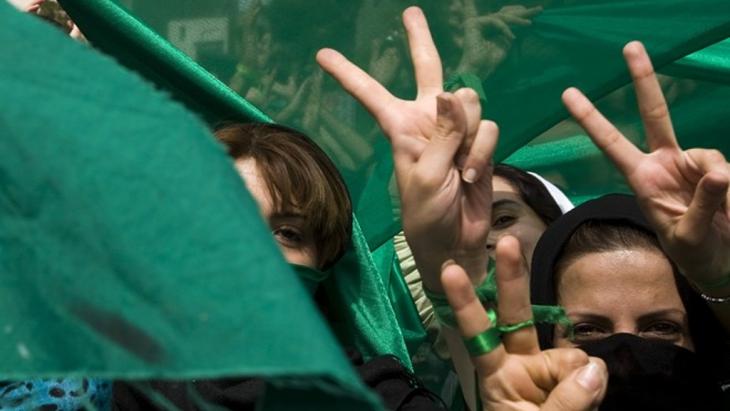
Two of the main reasons for the failure of the "Green Movement" are the violent suppression of the uprisings and the fact that a significant section of its followers distanced themselves from the movement. In addition, it was steered by a coalition comprising representatives of different wings within the Iranian government. This coalition pursued the dual aim of maintaining the order and structure of the Islamic Republic while reducing the movement to a means of exerting pressure, so as to increase its own share of power within the system.
This coalition attempted to divert the "Green Movement" from its actual goal – the annulment of the elections – and strived to exclude secular opposition groups from the movement. From the very outset, these coalition partners were against the mass of the protesting population that wanted substantial political reforms. Ultimately, this combination of countermeasures increasingly weakened the "Green Movement", eventually crippling it entirely.
Closing ranks with President Rouhani
Every four years, the Islamic Republic calls on its people to elect a president and a parliament. Only candidates approved by the Guardian Council, an Islamic control body whose six main members are appointed by the country's religious leader, are allowed to stand. The results of the election determine what share of executive and legislative power goes to the various wings of the government.
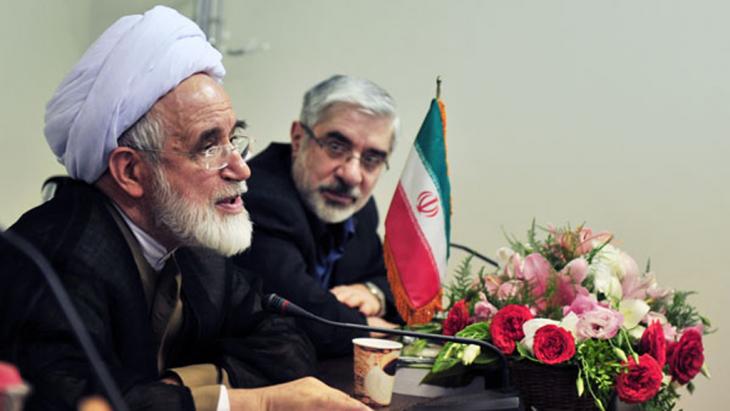
Three wings within the Iranian government – the religious reformers, the Executives of Construction Party ("Hezb-e Kargozaran") and the first-generation conservative clerics – formed the pillars of the coalition that supported the candidates Mir Hossein Mousavi and Mehdi Karroubi in the 2009 presidential elections.
This coalition, which led the "Green Movement", is now allied with the government of President Hassan Rouhani, who received the majority of votes in the 2013 election, while Mir Hossein Mousavi and Mehdi Karroubi remain under house arrest.
The first pillar of the coalition, the religious reformers, which includes Mohammad Khatami (president from 1997 to 2005), seek limited political and social reforms within the Islamic Republic's constitution. The religious reformers source most of their support from parts of the middle class.
The coalition's second pillar, the Executives of Construction Party, relies on entrepreneurs and capital holders, who have amassed great wealth through the shadow economy, institutionalised corruption and oil profits and are calling for the neoliberal privatisation of the economy. The highest-profile representative is Hashemi Rafsanjani, president from 1989 to 1997.
The third pillar consists of conservative clerics of the first generation, who are determined to retain their privileges in the current power structure. They too stand behind Rafsanjani. Mir Hossein Mousavi, the most influential presidential candidate in the 2009 elections, obtained some 14 million votes. These votes came not only from the coalition described above, which supported him; the majority of Iranian society consists of poor and low-income classes.
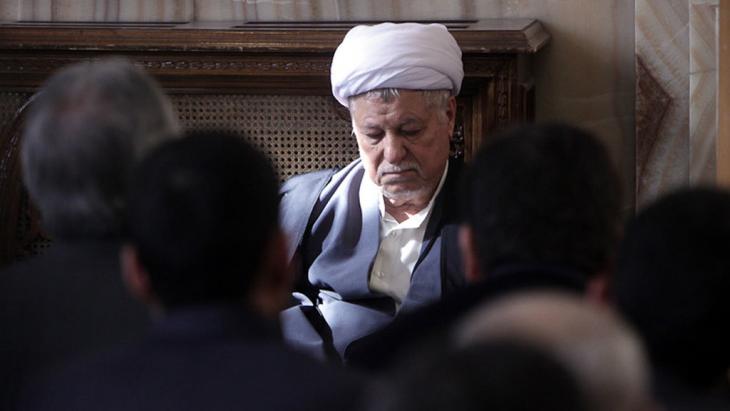
Large parts of the urban lower classes remembered the first decade after the revolution, when Mousavi was prime minister from 1981 to 1989 and raised his voice for social justice. This is why they gave him their votes. It was these people too who swelled the city protests against the election results in the summer of 2009, attending in their millions.
Turning away from Mousavi
Many, however, quickly distanced themselves from the "Green Movement". Mousavi's political agenda brought it home to them that he was not standing as a left-wing Islamic politician this time around, but as an ally of the oligarchy, and was acting in consensus with Rafsanjani, a symbol of corruption and nepotism for large parts of the poor.
After increasing sections of the population distanced themselves from the "Green Movement", the mass movement shrunk to a few thousand supporters, mainly young protesters from the urban middle and upper classes. This is why the apparatus of oppression had few problems crushing their protests for good.
During the demonstrations of the summer of 2009, slogans were also chanted against the Islamic leader and the Islamic Republic. The security forces reacted with even greater brutality. Countless people were killed; young demonstrators and well-known faces of the "Green Movement" disappeared behind bars; the two former presidential candidates, Mir Hossein Mousavi and Mehdi Karroubi, were placed under house arrest.
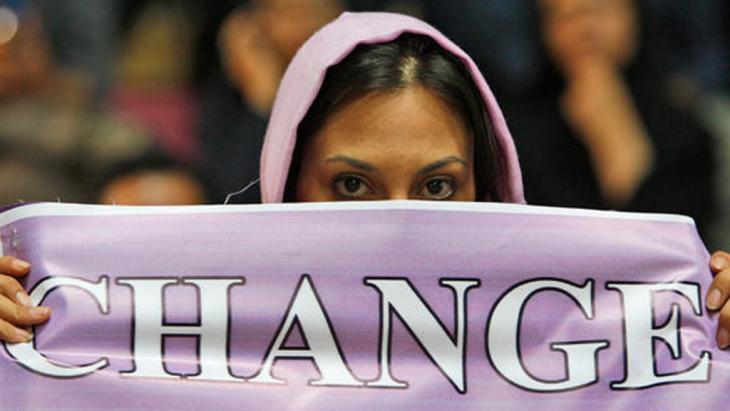
Lost legitimacy
The "Green Movement" may have failed to reach its primary goal, the annulment of the elections, but the spark of resistance had been lit, and the fire continued to smoulder behind the scenes. When the coalition that had led the movement supported Hassan Rouhani in the 2013 presidential elections, Mir Hossein Mousavi and Mehdi Karroubi did not stand against him, and the religious reformers joined Rouhani's government after his election victory, it was as if water had been poured on this smouldering fire.
The coalition shifted its support from Mir Hossein Mousavi to Hassan Rouhani in 2013 in the hope that the latter would win the election. Mohammad Khatami and Hashemi Rafsanjani publically stated their official support for him. Mir Hossein Mousavi and Mehdi Karroubi approved this policy with their silence and ambivalent statements on the subject. By giving their vote to Rouhani, most of the "Green Movement" consigned its main cause, the annulment of the previous presidential elections, to history. In so doing, the foundation on which the "Green Movement" was built disappeared.
Once elected, the Rouhani government focused its energies on the nuclear negotiations. By keeping his domestic and cultural policies conservative, Rouhani has attempted to gain the support of the conservative and traditionalist clerics for his foreign policy and to weaken resistance from extremist circles.
The coalition that once led the "Green Movement" and has now made a pact with Rouhani is thus far largely satisfied with its share of power and is preparing to win a majority for Rouhani in Iran's next parliamentary elections.
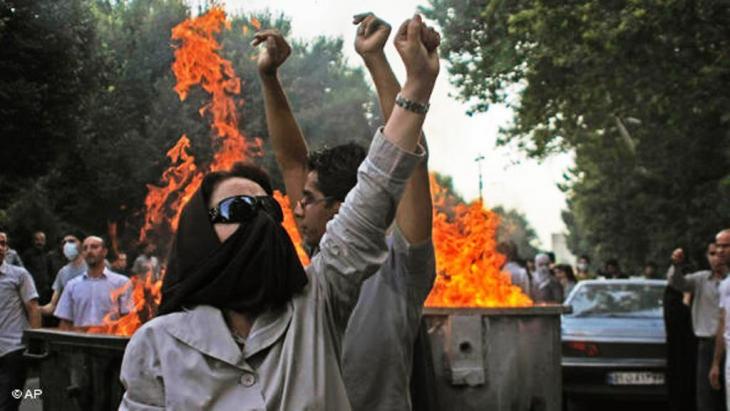
Oppressive sanctions
The Iranian economy is not built on manufacturing but on the country's oil income. International economic sanctions are only effective when they go beyond an embargo and prevent the transfer of funds from oil and gas income.
All wings of the Iranian government – from the oligarchy that has been able to stockpile wealth as a result of institutionalised corruption to the conservative clerics, from the religious leader and the commanders of the Revolutionary Guards to the Islamic reformers – are looking for a way out of the economic crisis. They know this will be impossible without the lifting – or at least the relaxing – of the sanctions.
The majority of the Iranian population lives below the poverty line, wants greater social justice and belongs to the conservative or the modern sections of the middle classes. This majority is now aware that the economic crisis will only deepen if the sanctions are not lifted, causing increasing poverty and unemployment. They want an end to sanctions through a compromise in the nuclear negotiations. The fate of the Rouhani government is thus closely linked to the talks on the nuclear programme.
The reformers' "symbolic capital"
And what of the "Green Movement"? It has transformed itself into the "symbolic capital" for the religious reformers so that they could negotiate with Rouhani. It has also become a means to reinforce its own power.
Its two imprisoned leaders, Mir Hossein Mousavi and Mehdi Karroubi, are the "Green Movement's" last symbolic figures. There have been occasional – albeit low-profile – calls for their release. Ending their house arrests could boost popularity for Rouhani and his supporters in the run-up to the parliamentary elections. It would not, however, be to Mousavi's and Karroubi's advantage – nor to that of Rouhani and his supporters – were the two opposition leaders to become politically active again. Were they to support Rouhani in the event of being released, they would lose their position as opposition leaders. Rejecting Rouhani, on the other hand, would exclude them from power for good and further distance them from their main supporters, who are now part of Rouhani's government.
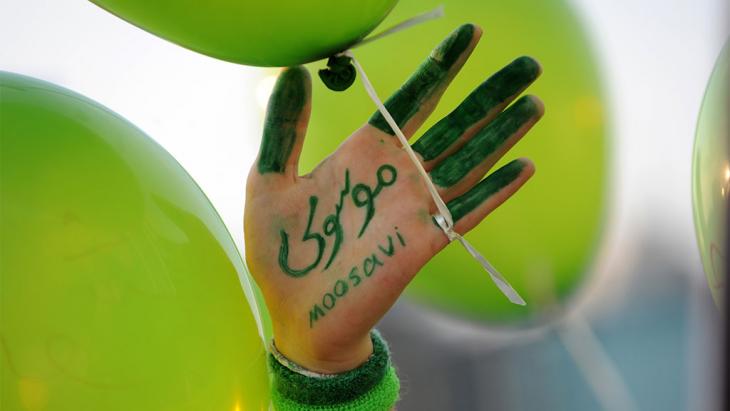
Hashemi Rafsanjani's former presidency ended in the late 1990s with mass uprisings in Iran's larger cities. Poverty, unemployment and dissatisfaction in the low-income classes were the main reason for the unrest at that time. Rouhani is now continuing Rafsanjani's economic policy.
A society in limbo
If he does not manage to end the economic crisis, Rouhani runs the risk of another public eruption of dissatisfaction. His minister of intelligence and state security recently warned of a "threat from the Left in society". Other ministers in Rouhani's cabinet picked up on his statement. The warnings are based on secret government reports that have established growing dissatisfaction among the poor and low-income classes.
The "Green Movement" with its call for the annulment of the 2009 presidential election, may be a thing of the past, but parts of Iranian society that once formed the movement and made political demands could come to the fore once again today. The movement is also very much present in the minds of its imprisoned leaders.
And so, until the outcome of the nuclear negotiations is definitive, Iranian society is in a kind of limbo. If the economic and political dissatisfaction can be channelled once again into a protest movement, society will reclaim the "Green Movement" from the past and breathe new life into it. A new version of the movement would then redefine its past.
Faraj Sarkohi
© Qantara.de 2014
Translated from the German by Katy Derbyshire
Editor: Aingeal Flanagan/Qantara.de
In 1985, Faraj Sarkohi founded the literary magazine "Adineh" (Friday). He was editor-in-chief of the magazine for 11 years. As one of the chief spokesmen for the initiative "The Declaration of 134 Writers", he was arrested in 1996. A year later, he was sentenced to death after being tried in secret; following international protests, his sentence was commuted. Two years later, he was allowed to leave Iran for Frankfurt am Main in Germany, where he now lives. In 1998, Sarkohi was awarded the Kurt Tucholsky Prize for writers subjected to political persecution. He is an honorary member of the German PEN Centre.